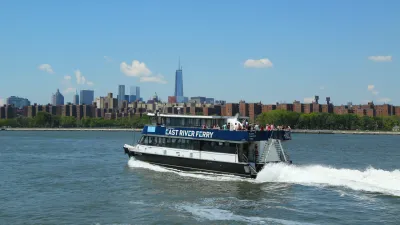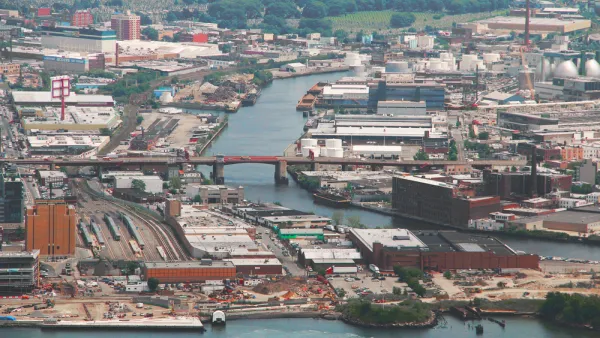Once again, the ferry is remaking the Brooklyn waterfront. One hundred years after making Brooklyn Heights the nation's original suburb, it's spawning new developments along the Brooklyn and Queens waterfront. And the fare? Same as a subway ride.

Brooklyn Heights became America's original suburb in 1814 with the maiden voyage of the Nassau, a steamship "carrying 549 passengers, one wagon and three horses" across the East River to Manhattan, wrote New York Times urban affairs correspondent, Sam Roberts, on Dec. 29, 2014. It would be at least 20 years before railroads began carrying passengers.
The East River Ferry, originally launched in 2011, took on new form after Mayor Bill de Blasio announced his intention four years later to greatly expand it. Details of the "ferry gamble" were unveiled in June 2016. The gamble looks like it's paying off.
"About seven months after the city expanded and subsidized the privately run ferry service — reducing the fare from up to $6 to $2.75, [...] ridership is up and so are rents in neighborhoods that were once harder to reach," writes Stefanos Chen, real estate reporter for The New York Times, on Dec. 1. The ferry revival "is luring developers to a long-neglected stretch of the city’s industrial waterfront, from western Queens to south Brooklyn."
After decades of little change, there are now thousands of new apartments coming to the shores of the 16-mile strait, about a quarter of them reserved for lower-income renters.
Residents on the East River waterfront in Astoria, Long Island City and Hunters Point in Queens, and eight Brooklyn neighborhoods from Greenpoint in the north to Bay Ridge in the south [see New York Times map (png)] can access four ferry lines across the East River to Manhattan for the price of a subway ride thanks to the new, expanded NYC Ferry Service launched last May by the city’s Economic Development Corporation.
The "now 16-vessel fleet of ferry boats that can each transport up to 149 passengers [...] with plans next year for routes to the Lower East Side and Soundview in the Bronx," adds Chen. It also serves Rockaway, Queens on the Atlantic coast.
Chen interviews residents who who live along the waterfront and use the ferry service, and reports on how the ferry service has affected real estate development and rental and housing prices in the neighborhoods it serves in the two boroughs.
See a rendering (jpg) of "the Greenpoint, a glassy 40-story rental and condo project opening next year with 603 units, with the ferry prominently placed in the foreground."
FULL STORY: How the Ferry Is Changing the Brooklyn-Queens Waterfront

Analysis: Cybertruck Fatality Rate Far Exceeds That of Ford Pinto
The Tesla Cybertruck was recalled seven times last year.

National Parks Layoffs Will Cause Communities to Lose Billions
Thousands of essential park workers were laid off this week, just before the busy spring break season.

Retro-silient?: America’s First “Eco-burb,” The Woodlands Turns 50
A master-planned community north of Houston offers lessons on green infrastructure and resilient design, but falls short of its founder’s lofty affordability and walkability goals.

Test News Post 1
This is a summary

Analysis: Cybertruck Fatality Rate Far Exceeds That of Ford Pinto
The Tesla Cybertruck was recalled seven times last year.

Test News Headline 46
Test for the image on the front page.
Urban Design for Planners 1: Software Tools
This six-course series explores essential urban design concepts using open source software and equips planners with the tools they need to participate fully in the urban design process.
Planning for Universal Design
Learn the tools for implementing Universal Design in planning regulations.
EMC Planning Group, Inc.
Planetizen
Planetizen
Mpact (formerly Rail~Volution)
Great Falls Development Authority, Inc.
HUDs Office of Policy Development and Research
NYU Wagner Graduate School of Public Service


























